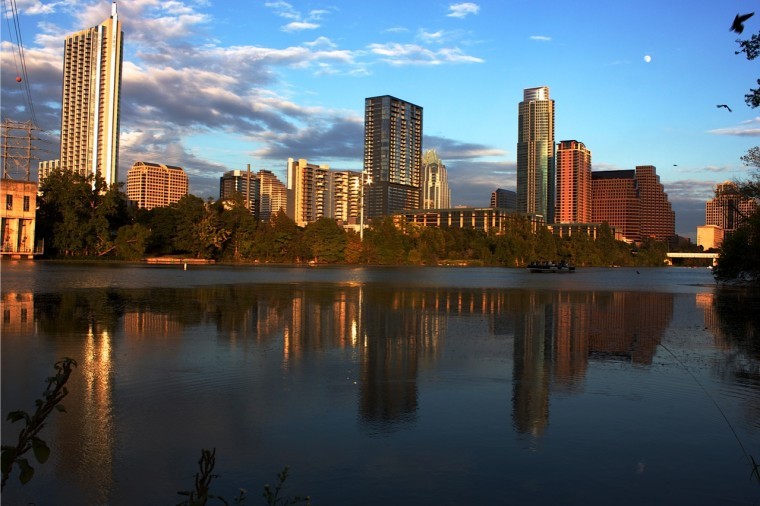Festival presents sanitation, water issues
With the Austin City Limits Music Festival moving to a two-week format next year, organizers and park officials say they are prepared to tackle whatever challenges lie ahead, utilizing all the current strategies for cleaning up and refurbishing the Zilker Park lawn.
But while the festival may use “green” initiatives to reduce environmental impact both during and after the festival, some say the water usage required of the festival could be harmful to the springs, and at the very least to the festival-goers.
The festival grounds on the Zilker great lawn take a beating every year, when over 70,000 music lovers descend upon the park. Following the weekend, the Austin Parks and Recreation Department shuts down the lawn for maintenance, re-sodding the grass, watering the lawn and picking up any trash may have been missed.
ACL devotees will remember the 2009 festival, when the lawn had to be completely revamped because of an abundance of rain that left the grounds a mess. Victor Ovalle of the Austin Parks & Recreation Department said that C3 Presents, the festival’s organizers, has more than made up for the damage.
“Since 2006, [C3 Presents] contributed $6 million,” Ovalle said. “C3 also reimburses the city for repairs and post-event maintenance.”
And next year, when the festival will span two weekends instead of one, both Austin Parks & Recreation and C3 Presents plan to continue the current system, but will focus more on renovating and watering during the week off in preparation for the second weekend of music, Ovalle said.
“General trash pick-up is managed throughout the weekend and after the festival by the employees,” said Sandee Fenton of C3 Presents. “Weather will also be a determining factor, and we won’t know the impact of weather conditions until next October.”
Ovalle said that Austin Parks and Recreation employees will water after each night from 10 p.m. until 2 a.m., adding that employees use raw water, which costs the city and Austinites considerably less, instead of treated water, which the parks department used in previous years.
“When you [water] at home, you’re hooked up to the city’s water system,” Ovalle said. “The pump doesn’t use water from that system, it uses raw water.”
Charles Porter, a professor of history at St. Edward’s University and water rights expert, agreed with Ovalle – the process does save money. But the maintenance following the festival often requires Dillo Dirt, Porter said. The fertilizer, which has been manufactured by the City of Austin since 1989, contains trace elements of reprocessed municipal sewage and yard trimmings, according to the Austin Water Utility’s website.
“I always ask my students ‘Do you realize what you’re splashing around in out there at ACL?’ I’m not saying that [it] shouldn’t be used in that situation, but I think they should be aware of what you’re in,” Porter said.
Porter’s advice to students who attend the festival: Throw away your shoes. The bacteria soaks into the shoes and is hard to get out, Porter said.
Aside from potential fecal coliform risks, Porter said the festival’s extension could add additional stress on the lawn, leading to further use of Dillo Dirt and, more importantly, water. Porter said the population boom in Central Texas will lead to more examination of water conservation strategies by both the city and the state as a whole, but the water required to water Zilker is a drop in the bucket, comparatively.
Porter reckons that one inch of water on one acre totals approximately 27,154 gallons, with that in mind the Zilker lawn, at 46 acres, would require just over 1 million gallons, 36 times less raw water than the city diverts from Lady Bird Lake every year, according to Lower Colorado River Authority’s raw water supply records.
Still, it was not the water that concerned Porter, but the potential impact on Lady Bird Lake.
“I think it’s more of a worry of where that water going when it drools back into the lake carrying Dillo Dirt,” Porter said. “When it runs off, it soaks in the ground, it runs somewhere. So it’s either Dillo Dirt or fertilizer.”






